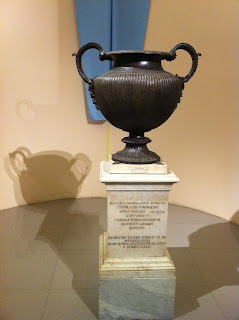Sunday, October 23, 2011 -  Cultural Plunder Database,Marc Masurovsky
Cultural Plunder Database,Marc Masurovsky
 No comments
No comments
 Cultural Plunder Database,Marc Masurovsky
Cultural Plunder Database,Marc Masurovsky
 No comments
No comments
Marking the First Anniversary of the launching of the Cultural Plunder Database
This week marked the first anniversary of the October 18, 2010, launching of the Database of Art Objects that transited through the Jeu de Paume from 1940 to 1944. The ARCA Blog wrote about the Database here, here and here.
Marc Masurovsky, the Project's director, sent out an email to supporters that he has permitted the ARCA blog to publish here:
In order to celebrate 12 months of global usage of the contents of this historical database, here are some generic statistics that give some idea about the people who visit and use it.
Thanks again to the Conference of Jewish Material Claims against Germany, the US Holocaust Memorial Museum, the Commission for Art Recovery, the interns, technicians, programmers, and volunteers who made this database a reality.
He provided the following information:
Number of pageviews: 377,715
Number of user source countries: 137
Top 10 user languages:
1/ English
2/ French
3/ German
4/ Dutch
5/ Spanish
6/ Italian
7/ Polish
8/ Danish
9/ Japanese
10/ Russian
Top 10 user countries (in decreasing order of importance):
1/ United States,
2/ France
3/ Germany
4/ Netherlands
5/ United Kingdom
6/ Spain
7/ Italy
8/ Belgium
9/ Canada
10/ Denmark
Top 10 user States in the US (by decreasing order of importance):
1/ New York
2/ California
3/ District of Columbia
4/ Massachusetts
5/ Texas
6/ Florida
7/ Virginia
8/ Illinois
9/ Pennsylvania
10/ North Carolina
The most popular artist queries were (in decreasing order of importance):
Picasso, Monet, van Gogh, Rembrandt, Rubens, Eugène Carrière, Greuze, Renoir, Chagall, Sisley, Teniers, Degas, Léger, Nattier, Modigliani, Sèvres vase, Pissarro, Manet, Rodin, Dali, Braque, Goya.
The most popular collection queries were (in decreasing order of importance):
Hugo Andriesse, Alexandrine de Rothschild, Louis Louis-Dreyfus, Rothschild, Arthur L. Mayer, Princess Colloredo, Adolphe Weiss, Frederic Unger, Riesener (Ball), Flavian.
The most viewed items were (by ERR number, name of artist/type of object and source user country):
1/ Unb 55/Salvador Dali (Spain),
2/ A Le 1/bronze of Napoleon (United States),
3/ Unb 326/Picasso (United States),
4/ KAP 21/Picasso (United States),
5/ A Le 32a/clock (United States),
6/ AD W1/Raphael (United States),
7/ Unb 30/Picasso (United States),
8/ Unb 327/Picasso (United States),
9/ Fla 39/Monet (France),
10/ Wbg 128/van Gogh (United States),
11/ Li 35/Renoir (United States),
12/ Li 38/Monet (United States),
13/ R 905/van Gogh (United States),
14/ R 1505/van Gogh (Germany),
15/ Unb 348/Monet (United States),
16/ Heilbronn 4/Monet (United States),
17/ Ha 1/van Ostade (United States),
18/ Wbg 127/van Gogh (Netherlands),
19/ Unb 39/Picasso (United States).
You may access the Cultural Plunder Database here.









